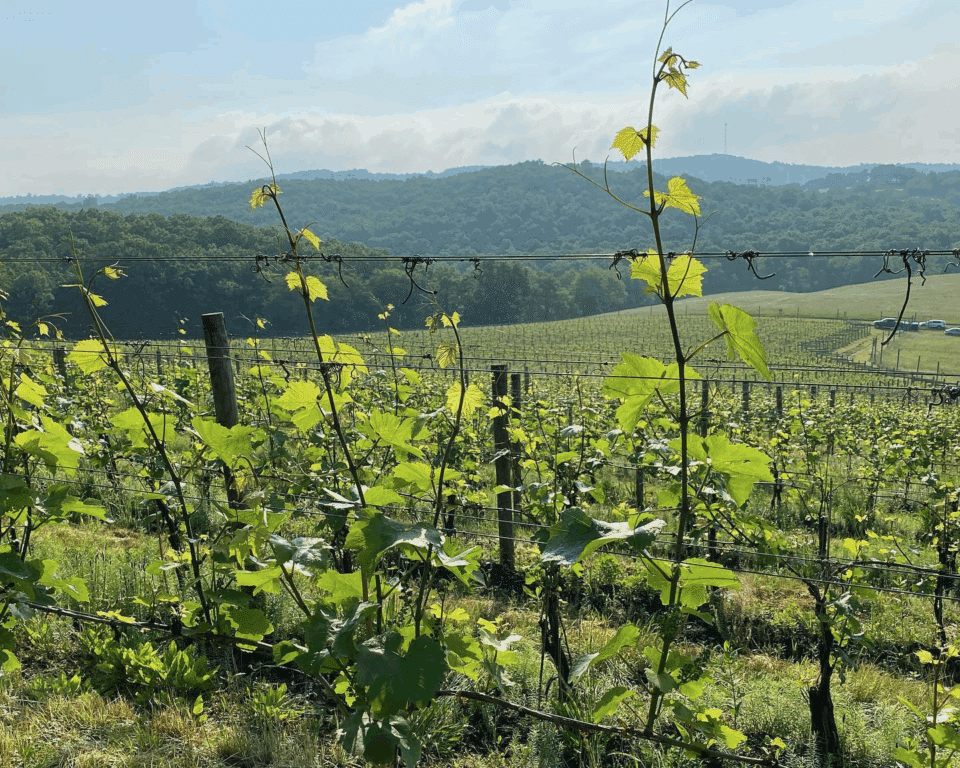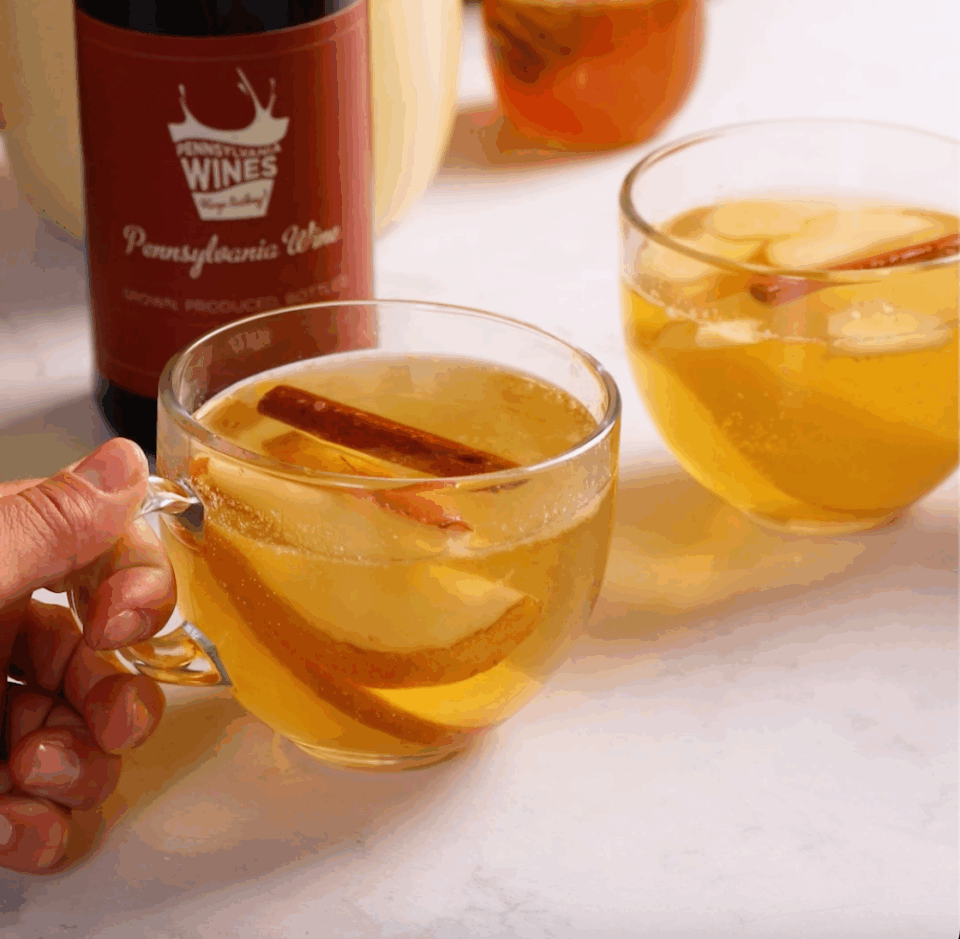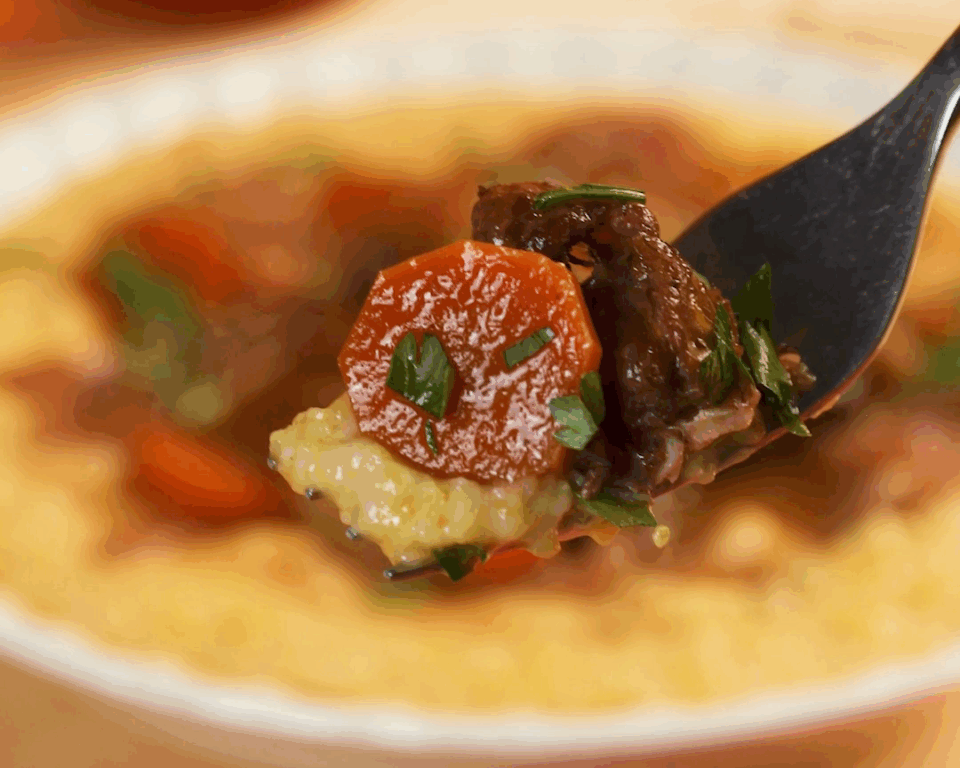While Pennsylvania is widely recognized as an agricultural powerhouse, it’s also a leader in viticulture and winemaking. There are some 450+ wineries across the Commonwealth, spanning five unique American Viticultural Areas (AVAs) and ranking in the top five states for wine production. As PA wine professionals move the industry forward, they’ve taken an in-depth look at the terroir and winemaking practices statewide. Through this lens, they have identified viticultural areas that reflect the modern winemaking identities of regions throughout Pennsylvania.
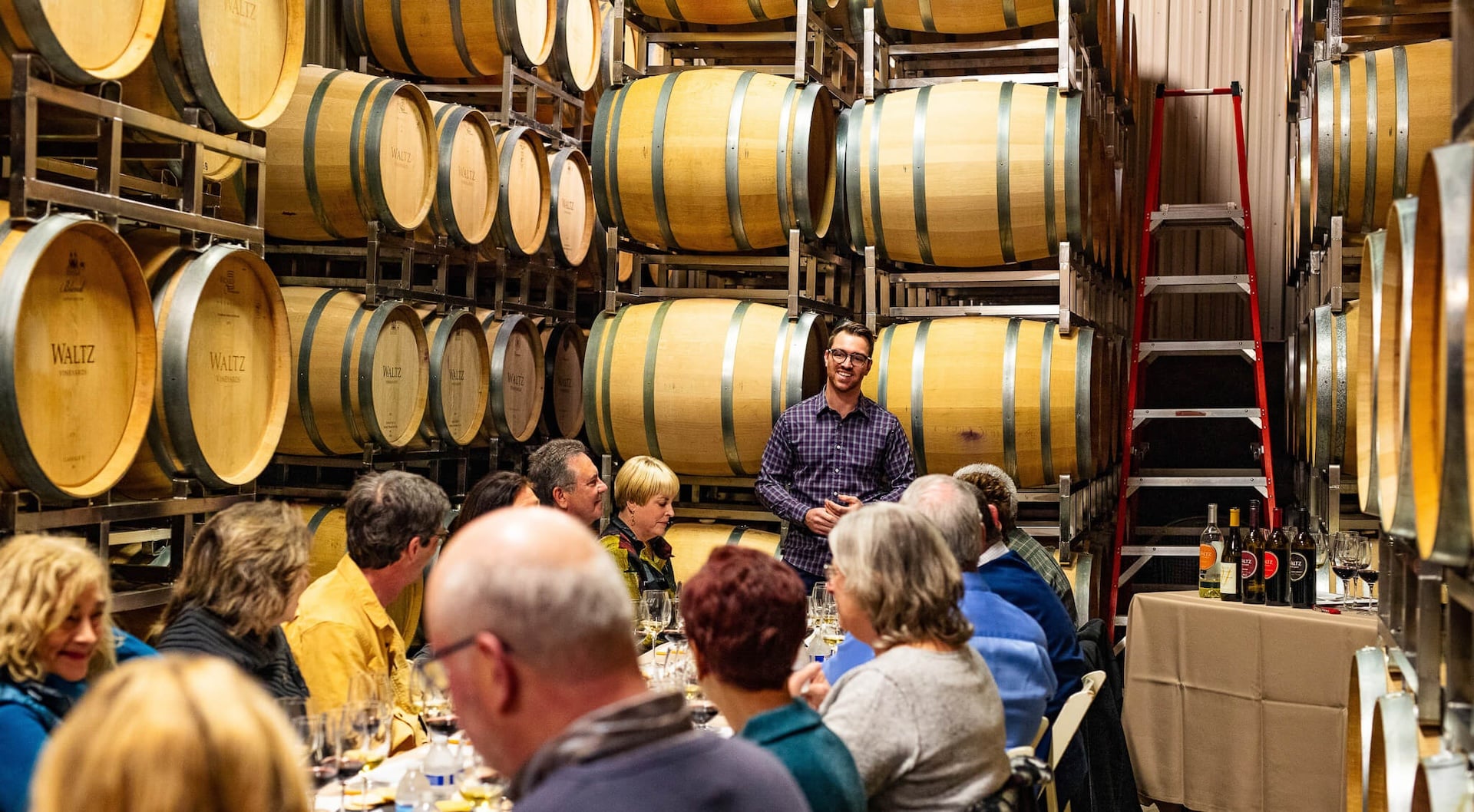
Zach Waltz leading Wine Club at Waltz Vineyards Estate Winery
To learn more about the Pennsylvania Viticultural Areas (PVAs), we spoke with Zach Waltz of Waltz Vineyards Estate Winery. He is at the forefront of the movement to update and advance PA’s viticultural designations. He spoke with us about the Lancaster PVA and what its establishment will offer to consumers and winemakers in the region and beyond.
Creating a Path Forward
American Viticultural Areas (AVAs) are federally designated wine grape regions in the United States, each with their own unique terroir. AVAs are generally established after lots of legwork from wineries and growers in an area, who undergo the process to designate and market their region’s unique qualities.
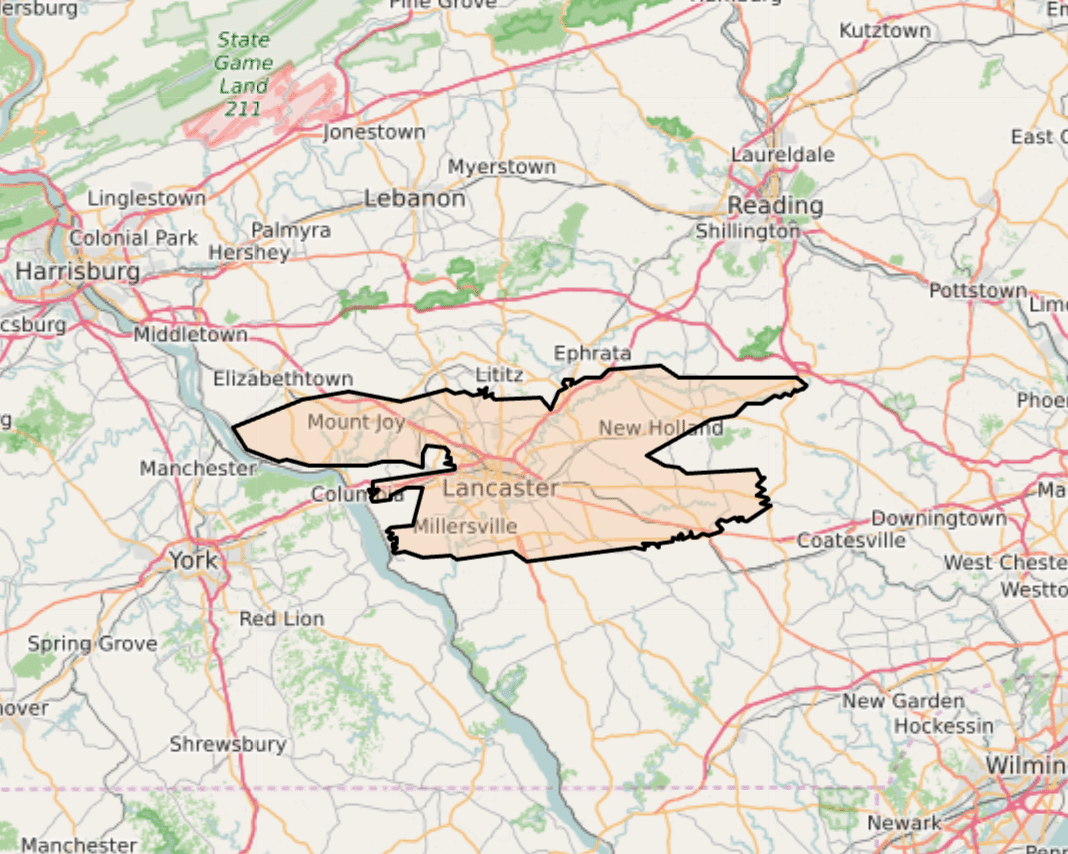
The Lancaster Valley AVA, established in 1984, on PlantMaps.com
As we’ve shared, there are five official AVAs in Pennsylvania, four of which were established during the initial boom of AVA formations across the country, which started in 1980. The fifth PA AVA, Lehigh Valley AVA, was established in 2008 during a second nationwide AVA surge. This means that the majority of PA AVAs are about four decades old, hearkening back to nearly unrecognizable times in PA wine culture.
“We feel that they’re outdated and don’t represent the modern industry,” says Waltz. “When they were established, there were probably 50 or less wineries in the state and now there’s more than 400. The climate has changed a lot, too, as well as other factors that have not been updated.”
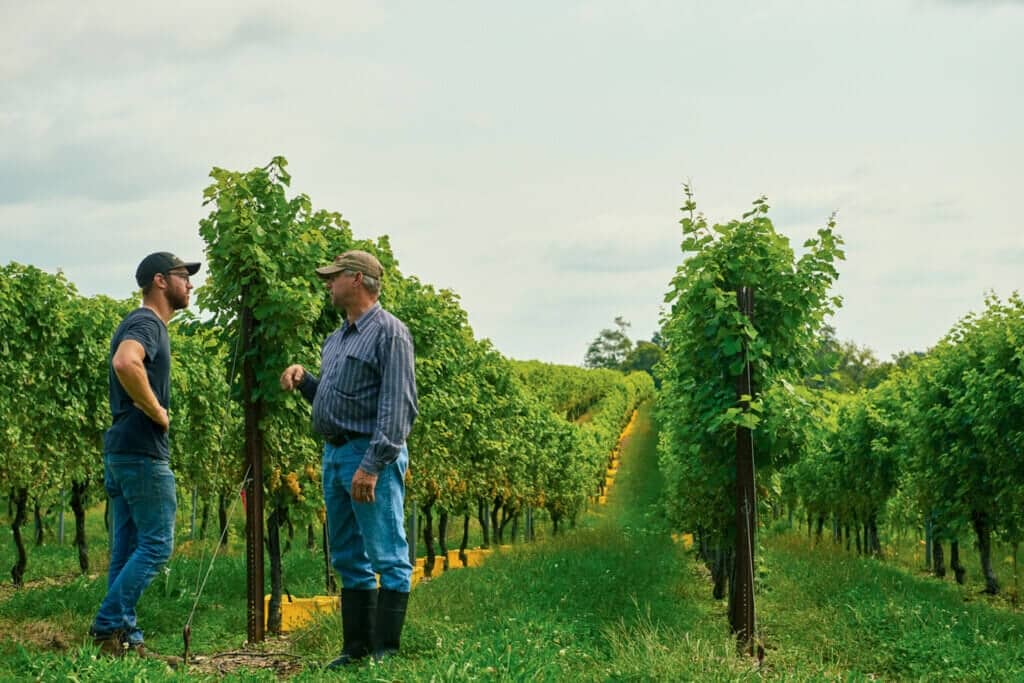
The Waltzes in the vineyard
Re-establishing and adding AVAs is a tedious, expensive process that requires initiative and commitment. As the Pennsylvania Wine Association (PWA) and winery owners like Waltz seek to build collaboration around the effort, they’re charting a new course.
Waltz says, “As an organization, the PWA asked, ‘What’s our best path to update this?’ So we decided to start with what we’re calling Pennsylvania Viticultural Areas. Once we establish this framework of wine regions in the state, what makes them unique and the best varieties grown in each region, we’ll have a nice foundation to create and update official AVAs from there.”
Waltz and other stakeholders have been reaching out to wineries and industry experts across PA, seeking consensus on regional boundaries while also looking at soil types, weather data and other information to carefully piece together PVAs. Waltz explains that the appellation will help consumers recognize PA’s predominant wine regions in universal terms. “And then, on top of that, a newly defined AVA map with the features making each region different should help drive tourism with an exciting way for people to explore.”
The first, valuable steps of delineation and description are nearly complete.
Lancaster PVA Characteristics
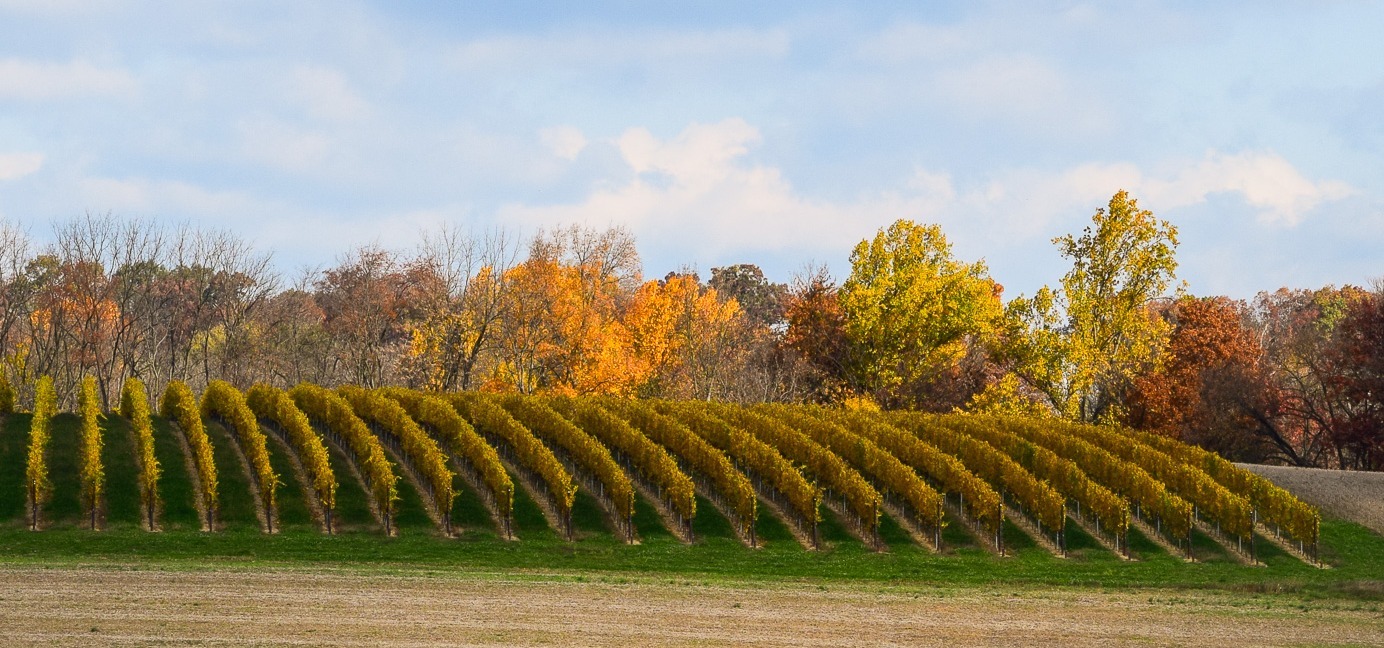
Vines at Waltz Vineyards Estate Winery
While Waltz Vineyards Estate Winery operates in Lancaster County, it’s not part of the Lancaster County AVA. The proposed PVA expands the existing AVA just a bit, to better align with the region’s natural and commonly held boundaries.
As a winemaker in the region, Waltz speaks well to its defining qualities. “There are four factors that go into what we call ‘terroir’ that we’re basing the PVAs on. They’re climate, terrain, soil and, in a lot of regions, the traditions and winemaking techniques that correspond with the varieties grown there.”
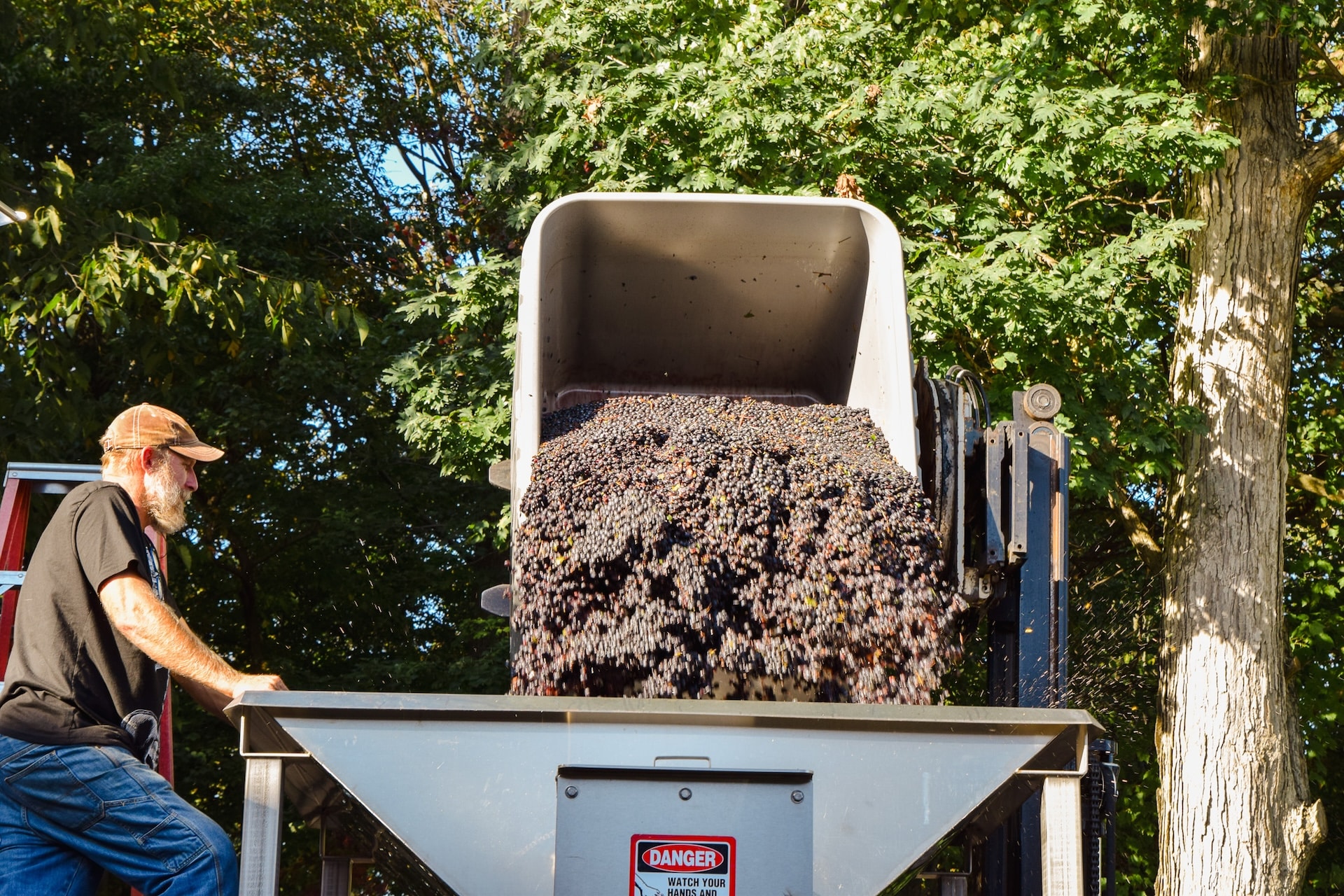
Harvest at Waltz Vineyards Estate Winery
One key feature of Lancaster’s climate is the relative dryness. “We’re in this unique little bubble where we get much less rainfall than the surrounding areas,” says Waltz. “Our average precipitation here is around 40 inches a year. If you drive half an hour north, they’re closer to 50 and even east of here, around Philly, they get quite a bit more than we do.”
There are a few reasons for this, primarily bodies of water, winds and nearby mountain ranges. “Anecdotally, we can watch the rainstorms split apart when they get to this region and go north and south of us,” Waltz says.
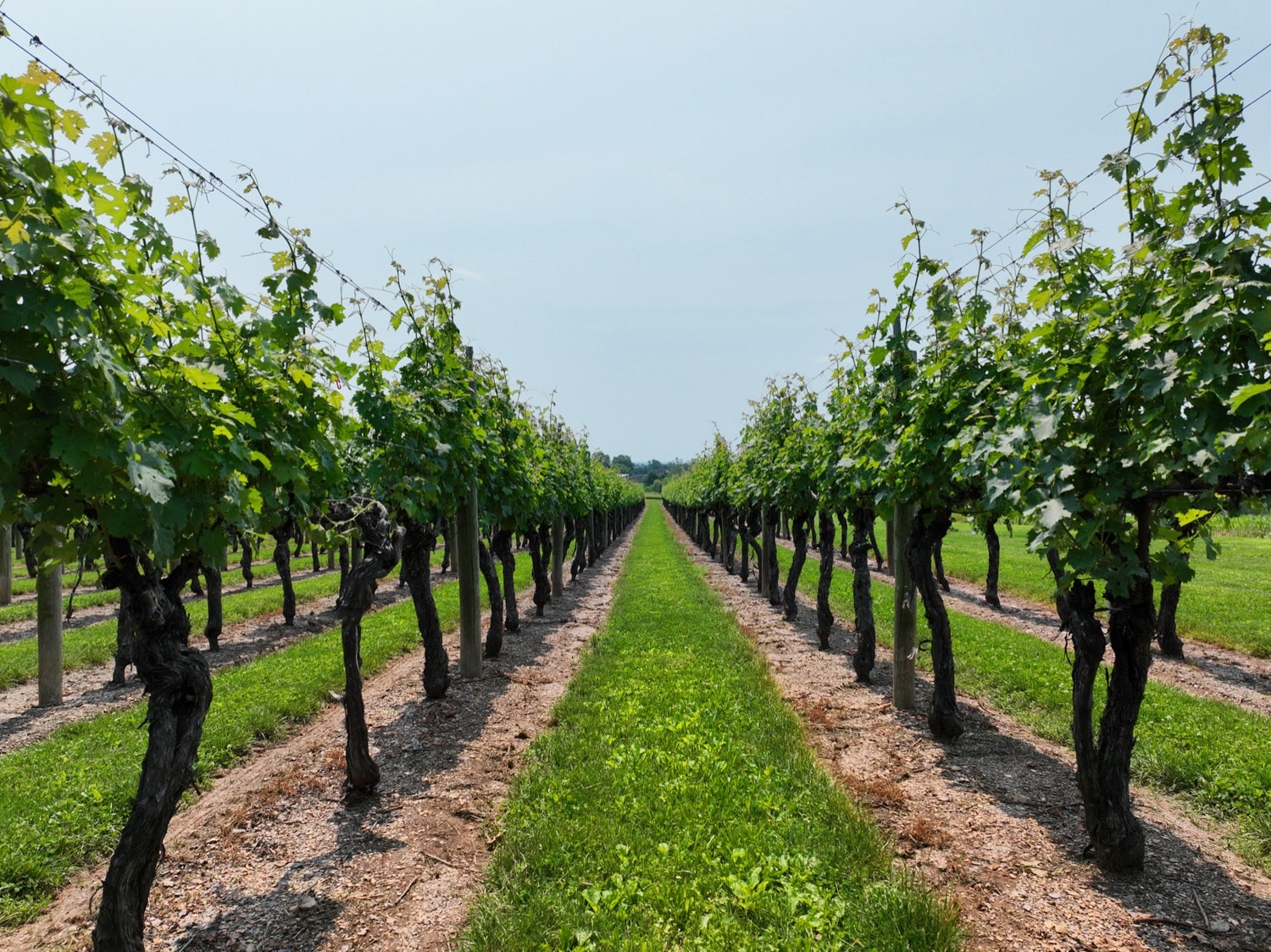
Additionally, Lancaster is warmer than other parts of the state. Temperature maps show average temperatures about ten degrees above western and northern Pennsylvania. It also has different frost dates and less severe temperatures in the winter than other regions. “That is really, really critical,” says Waltz. “Every grape has a freezing point, which is a specific temperature at which the vines start to die, and every variety is different. Chardonnay might be negative five and Cabernet Sauvignon might be negative seven. That can really determine what varieties you can grow within an AVA or PVA, down to the square mile.”
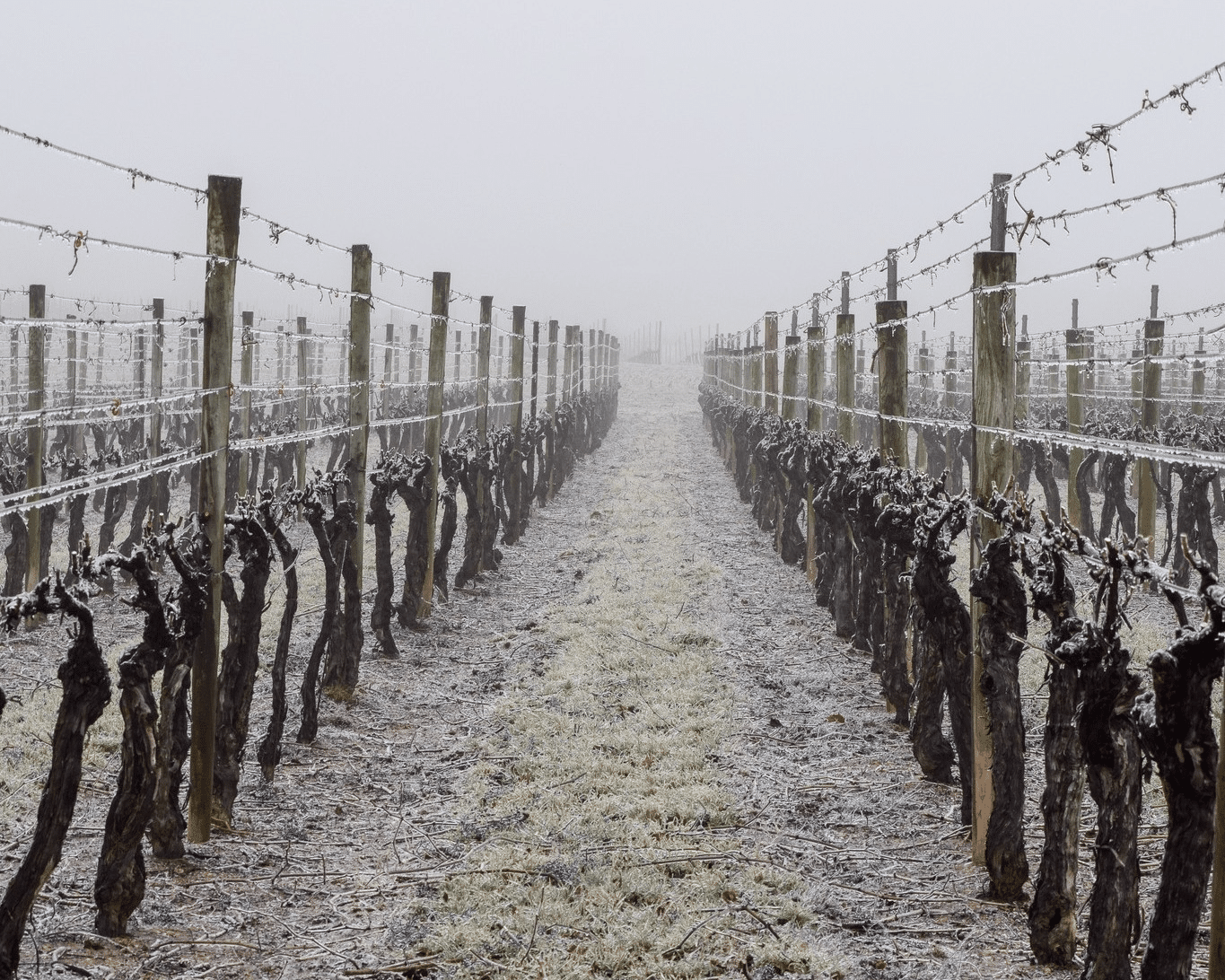
Also, the final spring frost acts as the starting point for the growing season. “You calculate how many days you’ll realistically have to ripen the crop throughout the year. If you look at Lancaster, York and Lebanon Counties, the average last spring freeze is April 11. As you move west and north of here, that date continually gets pushed back. There’s literally a month’s difference between the start of the growing season from the southeast to the northwest of Pennsylvania.”
The resulting arid, hot climate and long growing season of Lancaster PVA are wonderful for wine grapes. In particular, Waltz says, “For later ripening varieties in general, higher temperatures and lower rainfall are going to increase your odds for favorable ripening of harder-to-ripen red varieties like Merlot and Cabernet Franc.”
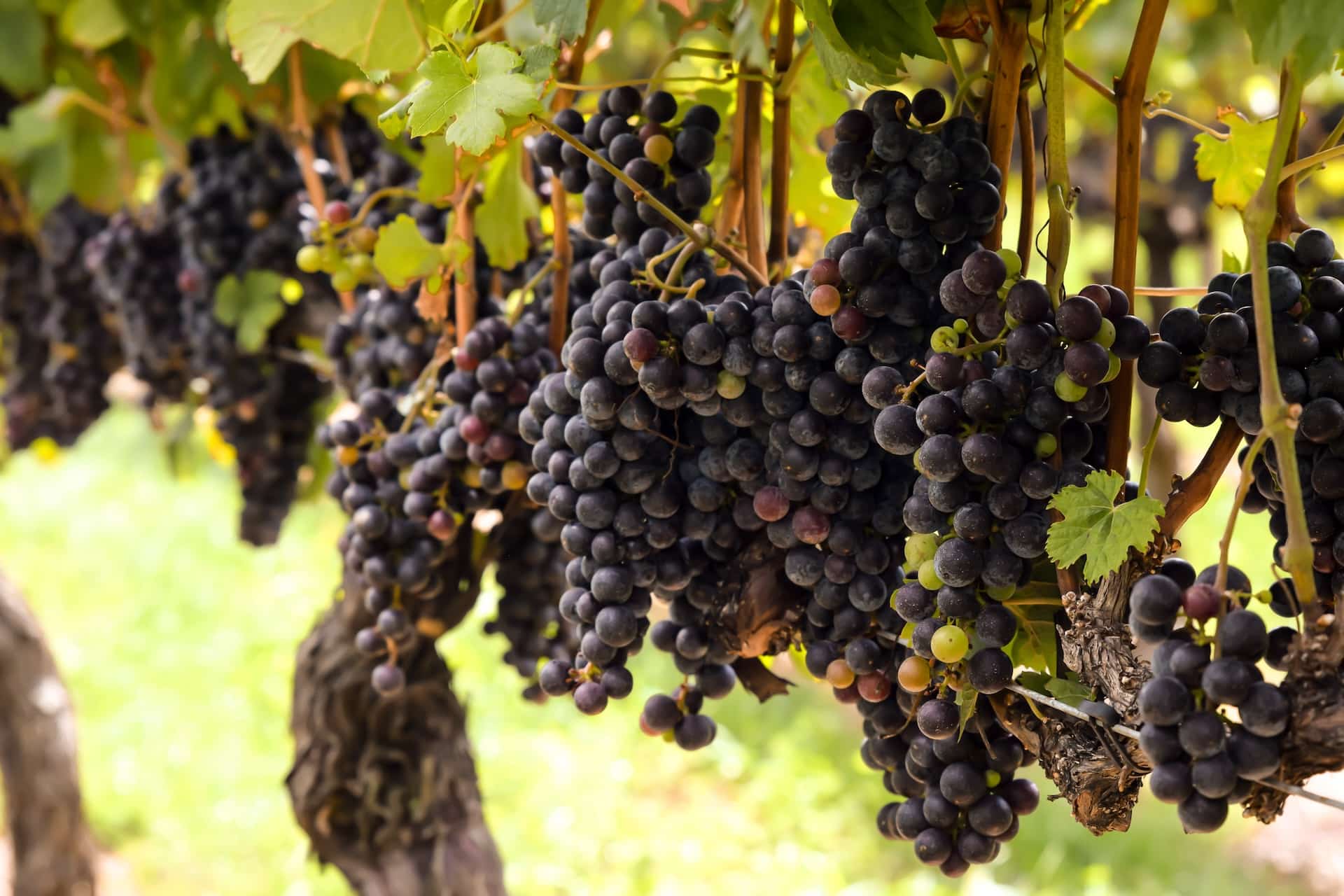
Ripe red wine grapes at Waltz Vineyards Estate Winery
With regards to terrain, Lancaster County has the rolling hills of most exceptional winemaking regions in the world. They create air drainage, with cool air sinking down into lower elevations. This is particularly true in northern parts of this PVA.
Finally, the region’s soils have high shale and silt content, which Waltz explains is great for water drainage. “Not only do we have lower rainfall than average, our soils are able to dissipate the rain much quicker than areas with clay soils.”
The Wines of Lancaster PVA

The conditions of Lancaster PVA are ripe, so to speak, for producing a variety of fantastic wines. Waltz Vineyards Estate Winery’s portfolio spans vitis vinifera and red, white and rosé blends.
When asked about wine varieties that stand out in the region, Waltz points to reds. “What’s the best variety that you can consistently ripen here every single year? I would say Cabernet Franc. But I think varieties like Cabernet Sauvignon really differentiate us, because it’s very difficult to grow outside of this PVA. So, I would definitely say Cabs. And, a lot of us here also grow Merlot. I think, in general, we are a red dominant region because the temperatures allow for the reds.”

As for white wines, Sauvignon Blanc is a fine example of the Lancaster PVA terroir. Waltz also produces Chardonnay, Sémillon and Moscato in addition to a PA-proud apple wine called Crisp. This fall, Waltz plans to release a Charmat-style sparkling rosé, joining a dry rosé blend in its pink-hued line, and a sparkling Chardonnay.
The Waltz Vineyards Estate Winery wines, including its Merlot, Merlot-Cabernet Sauvignon Blanc blend and Sauvignon Blanc, recently earned accolades in state and regional competitions, showing just how spectacular the wines of the Lancaster PVA can be!

Summer Kickoff at Waltz
To taste the terroir of Lancaster PVA, head to Waltz Vineyards Estate Winery, which recently opened its fourth location just outside Lancaster City with food service and local beer to round out your experience. You can also book a tasting at the winery and family farm. 1599 Old Line Rd., Manheim; (717) 664-9463.
The PA Vines & Wines series was created in collaboration with the Pennsylvania Wine Association.
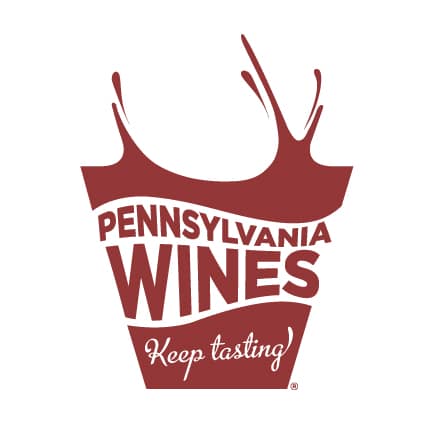
The Pennsylvania Winery Association (PWA) is a trade association that markets and advocates for the limited licensed wineries in Pennsylvania.
- Photos: Waltz Vineyard & Estate Winery
